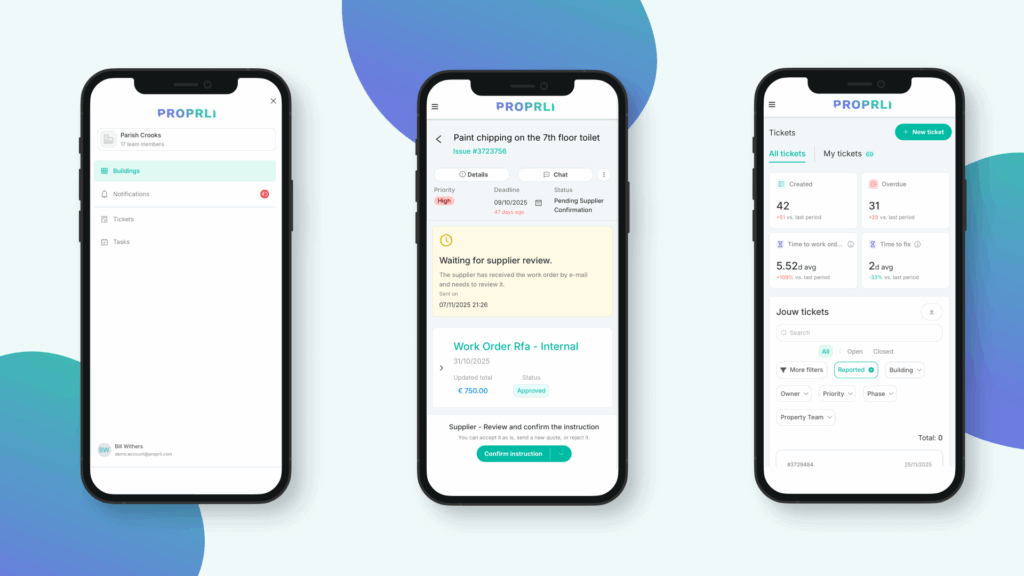In today’s fast-paced business environment, organizations rely heavily on their assets to drive productivity, profitability, and growth. Key Performance Indicators (KPIs) play a vital role in effective asset management by providing measurable metrics that reflect the performance, health, and utilization of assets.
By incorporating essential KPIs such as asset utilization rate, mean time between failures (MTBF), mean time to repair (MTTR), planned maintenance percentage (PMP), asset lifecycle cost, energy efficiency, return on assets (ROA), compliance rate, customer satisfaction, and mean time to failure (MTTF), organizations can optimize their asset management practices, reduce costs, and achieve their strategic goals.
Key Takeaways:
- Asset Management KPIs provide measurable metrics for asset performance, health, and utilization.
- Effective asset management KPIs include asset utilization rate, MTBF, MTTR, PMP, asset lifecycle cost, energy efficiency, ROA, compliance rate, customer satisfaction, and MTTF.
- By tracking and analyzing KPIs, organizations can optimize asset management, reduce costs, and achieve strategic goals.
- Data-driven decision making and proactive maintenance are key outcomes of utilizing asset management KPIs.
- KPIs help organizations in enhancing asset utilization, mitigating risks, and ensuring compliance.
Understanding Key Performance Indicators (KPIs) in Asset Management
In asset management, Key Performance Indicators (KPIs) are essential tools that provide valuable insights into the performance, health, and utilization of assets. These measurable metrics serve as benchmarks against which organizations can evaluate their progress, identify areas for improvement, and make data-driven decisions.
By incorporating relevant KPIs, organizations can quantify and track the effectiveness of their asset management strategies, aligning their efforts with strategic objectives. Analyzing these KPIs helps organizations gain a comprehensive understanding of their assets and their contribution to business objectives, identifying areas where improvements can be made.
Utilizing the right KPIs allows organizations to measure their performance accurately and take corrective actions when necessary. It enables continuous improvement and optimization of asset management strategies, leading to enhanced operational efficiency and better business outcomes.
Essential KPIs for Effective Asset Management
Effective asset management requires a holistic approach that encompasses proactive maintenance, strategic planning, risk management, and continuous improvement. To ensure successful asset management, organizations should incorporate essential Key Performance Indicators (KPIs) into their practices.
The following table outlines the important KPIs that organizations should consider tracking in their asset management initiatives:
| KPI | Description |
|---|---|
| Asset Utilization Rate | Measures the percentage of time an asset is in use, indicating its efficiency and value to the organization. |
| Mean Time Between Failures (MTBF) | Calculates the average time between asset failure incidents, providing insights into asset reliability and maintenance planning. |
| Mean Time to Repair (MTTR) | Determines the average time taken to repair an asset after a failure, influencing maintenance efficiency and minimizing downtime. |
| Planned Maintenance Percentage (PMP) | Measures the proportion of maintenance activities planned in advance, aiding proactive planning and reducing unplanned downtime. |
| Asset Lifecycle Cost | Calculates the total cost of acquiring, operating, and maintaining an asset throughout its lifecycle, facilitating cost optimization strategies. |
| Energy Efficiency | Evaluates the energy consumption of assets, enabling organizations to identify opportunities for energy savings and sustainability initiatives. |
| Return on Assets (ROA) | Assesses the profitability generated by assets in relation to their investment, indicating the effectiveness of asset utilization and financial performance. |
| Compliance Rate | Measures the percentage of assets that comply with regulatory standards, helping organizations meet legal requirements and mitigate risks. |
| Customer Satisfaction | Gauges customer feedback and satisfaction levels regarding asset performance and functionality, supporting customer-centric strategies. |
| Mean Time to Failure (MTTF) | Calculates the average time until an asset fails, providing insights into preventive maintenance and overall reliability. |
By tracking and analyzing these essential KPIs, organizations can make informed decisions, optimize asset utilization, reduce costs, improve maintenance efficiency, mitigate risks, and enhance overall asset management effectiveness. Incorporating these KPIs into asset management practices will drive performance, increase profitability, and contribute to the achievement of strategic goals.
Benefits of Utilizing KPIs for Effective Asset Management
The utilization of Key Performance Indicators (KPIs) in asset management provides several benefits for organizations. When you incorporate KPIs into your asset management practices, you gain valuable insights and advantages that can help drive success. Let’s explore the key benefits of utilizing KPIs in asset management:
1. Performance Monitoring and Improvement
KPIs allow you to monitor the performance of your assets effectively. By tracking essential metrics, such as asset utilization rate and mean time between failures (MTBF), you can identify areas of strength and areas that require improvement. These insights enable you to make data-driven decisions and take actions that optimize asset performance, reduce inefficiencies, and enhance overall productivity.
2. Data-Driven Decision Making
KPIs provide you with objective and quantifiable data that supports informed decision-making. By analyzing metrics like asset lifecycle cost and energy efficiency, you gain a deeper understanding of your assets’ financial performance and resource usage. This knowledge empowers you to make strategic decisions that maximize cost savings, improve financial performance, and align with your organization’s goals.
3. Proactive Maintenance and Reduced Downtime
KPIs related to asset reliability and uptime enable you to proactively plan maintenance activities. By measuring metrics such as mean time to repair (MTTR) and planned maintenance percentage (PMP), you can identify potential issues before they escalate, reduce unplanned downtime, and ensure smooth operations. Proactive maintenance reduces costly disruptions and enhances both asset performance and customer satisfaction.
4. Cost Optimization
KPIs provide insights into asset lifecycle costs, resource utilization, and energy efficiency. By tracking metrics like return on assets (ROA) and energy consumption, you can optimize asset investments, identify cost-saving opportunities, and streamline your budget allocation. Cost optimization through KPI analysis helps you minimize operational expenses, improve financial outcomes, and optimize the use of your resources.
5. Enhanced Asset Utilization
KPIs help you maximize asset utilization by identifying underutilized assets and optimizing their deployment. Metrics like asset utilization rate and mean time to failure (MTTF) enable you to assess your asset performance and usage patterns. By leveraging these insights, you can improve resource allocation, reduce the need for new acquisitions, and ensure that your assets are working at their full potential.
6. Risk Mitigation and Compliance
KPIs play a crucial role in mitigating risks and ensuring compliance with regulatory standards. By tracking metrics such as compliance rate and customer satisfaction, you can assess your organization’s adherence to legal requirements and industry regulations. This proactive approach helps you minimize potential risks, avoid penalties, and maintain a positive reputation.
7. Customer-Centric Strategies
KPIs provide insights into customer satisfaction and asset management practices from a user perspective. By measuring metrics related to customer satisfaction, you can prioritize customer-centric strategies that enhance the overall experience. This customer-focused approach strengthens your relationships, improves brand loyalty, and drives long-term success.
By leveraging the benefits of utilizing KPIs in asset management, you can optimize your practices, reduce costs, and achieve your strategic goals. Whether it’s monitoring performance, making data-driven decisions, ensuring proactive maintenance, optimizing costs, maximizing asset utilization, mitigating risks, or prioritizing customer satisfaction, KPIs play a pivotal role in driving success.
Performance Monitoring and Improvement
When it comes to effective asset management, performance monitoring is essential for driving continuous improvement. Key Performance Indicators (KPIs) provide a valuable tool for organizations to track and measure their asset performance, enabling them to identify trends, strengths, and areas for improvement.
By regularly monitoring KPIs, organizations can establish benchmarks and set performance targets that align with their strategic goals. This allows them to track their progress over time and identify improvement opportunities. With data-driven insights provided by KPIs, organizations can make informed decisions to optimize resource allocation and drive performance improvement initiatives.
Through the analysis of KPIs, organizations gain measurable insights into the effectiveness of their asset management strategies. They can identify areas where asset performance can be optimized, such as reducing downtime, enhancing maintenance efficiency, and improving overall asset utilization.
Continuous performance monitoring using KPIs allows organizations to stay proactive in their approach to asset management. By identifying trends and patterns in asset performance data, they can mitigate risks, plan maintenance activities, and minimize disruptions. This proactive approach helps organizations reduce downtime, maintain operational efficiency, and ultimately, improve their bottom line.
Optimizing performance with KPIs is a continuous process. By leveraging the insights provided by these metrics, organizations can make data-driven decisions and implement targeted improvements. Whether it’s optimizing maintenance schedules, improving energy efficiency, or enhancing customer satisfaction, KPIs provide the foundation for asset management success.
The Benefits of Performance Monitoring with KPIs
Monitoring and improving asset performance using KPIs offers several benefits, including:
- Identifying trends and patterns in asset performance
- Pinpointing areas for improvement and optimization
- Setting benchmarks and performance targets
- Driving continuous improvement initiatives
- Mitigating risks and minimizing downtime
- Optimizing resource allocation
- Making data-driven decisions
By leveraging the power of KPIs to monitor and improve asset performance, organizations can optimize their asset management practices, reduce costs, and achieve their strategic goals.
| Benefits of Performance Monitoring with KPIs |
|---|
| Identifying trends and patterns in asset performance |
| Pinpointing areas for improvement and optimization |
| Setting benchmarks and performance targets |
| Driving continuous improvement initiatives |
| Mitigating risks and minimizing downtime |
| Optimizing resource allocation |
| Making data-driven decisions |
Data-Driven Decision Making
KPIs serve as valuable tools for organizations to make data-driven decisions and steer their asset management strategies towards success. By analyzing KPIs, you can gain insights into various aspects of your assets, allowing you to prioritize maintenance activities, allocate resources efficiently, and make informed investment decisions. These KPIs provide objective and quantifiable data that supports your decision-making process, ensuring that you are utilizing reliable and relevant metrics to drive your business forward.
By leveraging KPIs, you can gain valuable insights into asset performance, maintenance efficiency, cost optimization, energy consumption, compliance, and customer satisfaction. This data empowers you to make informed decisions that maximize asset performance, reduce costs, and ultimately contribute to the overall success of your organization.
Let’s take a closer look at how leveraging KPIs for decision making can positively impact your asset management practices:
- Identify maintenance priorities: By analyzing KPIs such as mean time between failures (MTBF) and mean time to repair (MTTR), you can prioritize maintenance activities based on asset reliability and criticality.
- Efficient resource allocation: By utilizing KPIs, you can allocate resources effectively, ensuring that maintenance and operational activities are carried out efficiently.
- Strategic investment decisions: KPIs related to asset lifecycle cost and energy efficiency can guide your decision-making process when it comes to investing in new assets or replacing existing ones.
By making data-driven decisions with the help of KPIs, you can optimize your asset management practices, reduce costs, and drive your organization towards success.
Proactive Maintenance and Reduced Downtime
In effective asset management, proactive maintenance is key to minimizing downtime and maximizing operational efficiency. By implementing Key Performance Indicators (KPIs) such as mean time between failures (MTBF) and mean time to repair (MTTR), organizations can proactively plan maintenance activities, predict failures, and prevent unplanned downtime.
The MTBF KPI measures the average time between asset failures. By tracking this metric, organizations can identify patterns and anticipate potential issues, allowing them to schedule maintenance activities before a breakdown occurs. This proactive approach significantly reduces the risk of unexpected downtime, ensuring that assets remain operational and productive.
Similarly, the MTTR KPI measures the average time taken to repair an asset after a failure. By monitoring and improving MTTR, organizations can minimize the time required for repairs and swiftly restore asset functionality, reducing downtime and production disruptions.
The implementation of proactive maintenance strategies through KPIs helps improve asset reliability, enhance customer satisfaction, and maintain operational efficiency. By reducing downtime, organizations can maximize asset availability and ensure optimal performance.
| Benefits of Proactive Maintenance and Reduced Downtime |
|---|
| 1. Minimize production disruptions |
| 2. Enhance asset reliability |
| 3. Improve customer satisfaction |
| 4. Maximize operational efficiency |
| 5. Optimize asset availability |
By actively monitoring and utilizing proactive maintenance strategies facilitated by KPIs, organizations can minimize asset downtime, improve overall operational efficiency, and ensure successful asset management.
Cost Optimization
When it comes to cost optimization in asset management, Key Performance Indicators (KPIs) can provide valuable insights and opportunities for maximizing cost savings and improving financial performance. By incorporating KPIs related to asset lifecycle cost and energy efficiency, organizations can identify areas for cost optimization and make informed decisions to optimize resource allocation.
One essential KPI is evaluating the total cost of an asset throughout its lifecycle. This KPI allows organizations to assess the expenses associated with acquisition, maintenance, repair, and eventual retirement of assets. By analyzing the lifecycle cost, organizations can identify cost-saving opportunities, such as optimizing maintenance strategies or determining whether to repair, replace, or retire assets.
To further enhance cost optimization, organizations can utilize KPIs related to energy efficiency. By measuring energy consumption and efficiency, organizations can identify areas where energy costs can be reduced and optimize resource allocation accordingly. Energy-efficient assets not only reduce operational expenses but also contribute to sustainable practices and align with environmental goals.
By leveraging these KPIs, organizations can reduce operational expenses, extend the lifespan of assets, and improve financial performance. Let’s take a look at an example to better understand how these KPIs can drive cost optimization:
Example: Cost Optimization with KPIs
| Asset | Lifecycle Cost | Energy Consumption |
|---|---|---|
| Asset A | $100,000 | 20,000 kWh |
| Asset B | $150,000 | 15,000 kWh |
| Asset C | $120,000 | 25,000 kWh |
In the example above, organizations can analyze the lifecycle costs and energy consumption of different assets. By doing so, they can identify that Asset B has a higher lifecycle cost compared to Asset A and Asset C, and that Asset C consumes more energy than Asset A and Asset B. Based on this analysis, organizations can evaluate potential cost-saving opportunities, such as implementing energy-efficient measures for Asset C or exploring alternate asset options.
By continuously monitoring and analyzing these cost optimization KPIs, organizations can identify opportunities to reduce operational expenses, improve asset performance, and enhance financial outcomes.
Enhanced Asset Utilization
In order to optimize asset management and drive cost-effective strategies, organizations can leverage Key Performance Indicators (KPIs) to enhance asset utilization. By tracking metrics such as asset utilization rate, organizations can identify underutilized assets that can be either optimized or retired. This approach reduces the need for new acquisitions, decreases capital expenditure, and leads to improved resource allocation.
By effectively measuring and analyzing asset utilization, organizations gain the ability to allocate resources more efficiently, resulting in cost reductions and enhanced operational efficiency. Through the implementation of KPIs, organizations can achieve optimum asset utilization, strategically aligning their assets with business objectives.
Maximizing asset utilization not only improves operational efficiency, but it also provides organizations with a competitive advantage. By effectively managing and utilizing existing assets, organizations can minimize costs, reduce inefficiencies, and achieve greater profitability.
Improving Resource Allocation through KPIs
Key Performance Indicators (KPIs) enable organizations to measure and optimize resource allocation. By tracking asset utilization and analyzing relevant KPIs, organizations can make data-driven decisions about how to allocate resources effectively.
Through the use of KPIs, organizations can identify areas where resources are being underutilized or where adjustments can be made to improve efficiency. By effectively allocating resources based on KPI insights, organizations can reduce costs, increase productivity, and drive overall business performance.
Optimizing Asset Deployment with KPIs
KPIs play a critical role in optimizing asset deployment. By tracking and analyzing asset utilization metrics, organizations can gain insights into how assets are deployed and identify opportunities for improvement.
Through the implementation of KPIs, organizations can optimize the deployment of assets by strategically aligning them with operational needs and business objectives. This enables organizations to make informed decisions about when and where to deploy assets, resulting in improved efficiency, reduced costs, and enhanced overall asset management effectiveness.
With the ability to maximize asset utilization, improve resource allocation, and optimize asset deployment through KPIs, organizations are empowered to drive efficient asset management practices and achieve their strategic goals.
Risk Mitigation and Compliance
KPIs play a critical role in ensuring compliance with regulatory requirements, certifications, and safety guidelines, while also mitigating risks for organizations. By tracking compliance rate and customer satisfaction KPIs, organizations can demonstrate their commitment to compliance and corporate responsibility. These metrics provide valuable insights into adherence to regulatory standards, enabling organizations to avoid penalties and maintain a positive reputation.
Risk Mitigation with KPIs:
- Track compliance rate KPIs to ensure adherence to regulatory standards, certifications, or safety guidelines
- Mitigate risks by identifying areas of non-compliance and taking proactive measures
- Avoid penalties and maintain a positive reputation by demonstrating commitment to compliance
Ensuring Compliance through KPIs:
- Monitor compliance rate KPIs to evaluate the organization’s adherence to regulatory requirements
- Identify areas of non-compliance and take corrective actions to ensure compliance
- Implement KPIs to meet regulatory standards and maintain industry certifications
Managing Regulatory Requirements with KPIs:
- Track compliance rate KPIs to evaluate adherence to regulatory requirements
- Ensure compliance with safety guidelines, certifications, and industry standards
- Implement KPIs to support regulatory compliance and demonstrate corporate responsibility
Customer Satisfaction and Compliance
Customer satisfaction KPIs provide valuable insights into the effectiveness of asset management practices from a user perspective. By analyzing customer satisfaction metrics, organizations can identify areas for improvement and prioritize customer-centric strategies. These KPIs also contribute to compliance efforts, as satisfied customers are more likely to comply with regulatory requirements.
Example Customer Satisfaction KPIs:
| KPI | Description |
|---|---|
| Net Promoter Score (NPS) | Measures customer loyalty and likelihood to recommend the organization |
| Customer Effort Score (CES) | Evaluates the ease of doing business with the organization |
| Customer Satisfaction (CSAT) | Assesses overall customer satisfaction with products and services |
In conclusion, leveraging KPIs related to compliance rate and customer satisfaction enables organizations to ensure compliance, mitigate risks, and prioritize customer-centric strategies. By embracing these KPIs, organizations can demonstrate their commitment to compliance and enhance their operational effectiveness.
Conclusion
In conclusion, Key Performance Indicators (KPIs) are essential tools for effective asset management. By incorporating tailored KPIs into their practices, organizations can make data-driven decisions, optimize resource allocation, and drive continuous improvement. The utilization of KPIs brings numerous benefits, including improved performance monitoring, enhanced decision-making, proactive maintenance planning, cost optimization, and optimized asset utilization.
KPIs also support risk mitigation and compliance efforts, ensuring organizations meet regulatory standards and customer satisfaction. They promote performance transparency, accountability, and alignment with organizational goals, fostering a culture of continuous improvement. By leveraging the power of KPIs, organizations can optimize their asset management practices, enhance operational efficiency, reduce costs, and achieve their strategic goals.
In summary, incorporating Asset Management KPIs is crucial for organizations seeking to maximize the potential of their assets. By monitoring and analyzing these metrics, organizations gain valuable insights into asset performance, make informed decisions, and enhance overall efficiency. With the right set of KPIs, organizations can improve their asset management practices, reduce downtime, and achieve long-term success.
FAQ
How do Asset Management KPIs drive business performance?
Asset Management KPIs provide measurable metrics that reflect the performance, health, and utilization of assets. By incorporating essential KPIs, organizations can optimize their asset management practices, reduce costs, and achieve their strategic goals.
What are Key Performance Indicators (KPIs) in Asset Management?
KPIs are measurable metrics that provide valuable insights into the performance, health, and utilization of assets. They serve as benchmarks against which organizations can evaluate their progress, identify areas for improvement, and make data-driven decisions.
What are the essential KPIs for effective asset management?
Essential KPIs for asset management include asset utilization rate, mean time between failures (MTBF), mean time to repair (MTTR), planned maintenance percentage (PMP), asset lifecycle cost, energy efficiency, return on assets (ROA), compliance rate, customer satisfaction, and mean time to failure (MTTF).
What are the benefits of utilizing KPIs for effective asset management?
Utilizing KPIs in asset management allows organizations to monitor performance, make data-driven decisions, plan proactive maintenance, optimize costs, enhance asset utilization, mitigate risks, ensure compliance, and prioritize customer satisfaction.
How do KPIs contribute to performance monitoring and improvement?
By tracking and analyzing KPIs, organizations gain insights into asset performance, identify improvement opportunities, and continuously improve their asset management practices.
How can KPIs enable data-driven decision making?
KPIs provide organizations with objective and quantifiable data that supports informed decision-making, aiding in resource allocation, maintenance planning, and strategic investment decisions.
How do KPIs facilitate proactive maintenance and reduced downtime?
KPIs such as mean time between failures (MTBF) and mean time to repair (MTTR) help organizations predict failures, schedule maintenance activities, and minimize unplanned downtime.
How can KPIs contribute to cost optimization?
KPIs related to asset lifecycle cost and energy efficiency help organizations identify cost-saving opportunities, optimize resource allocation, and improve financial performance.
How do KPIs enhance asset utilization?
KPIs related to asset utilization rate help organizations identify underutilized assets, reduce the need for new acquisitions, and improve resource allocation.
How do KPIs support risk mitigation and compliance?
KPIs related to compliance rate and customer satisfaction ensure adherence to regulatory standards, mitigate risks, and maintain a positive reputation.






